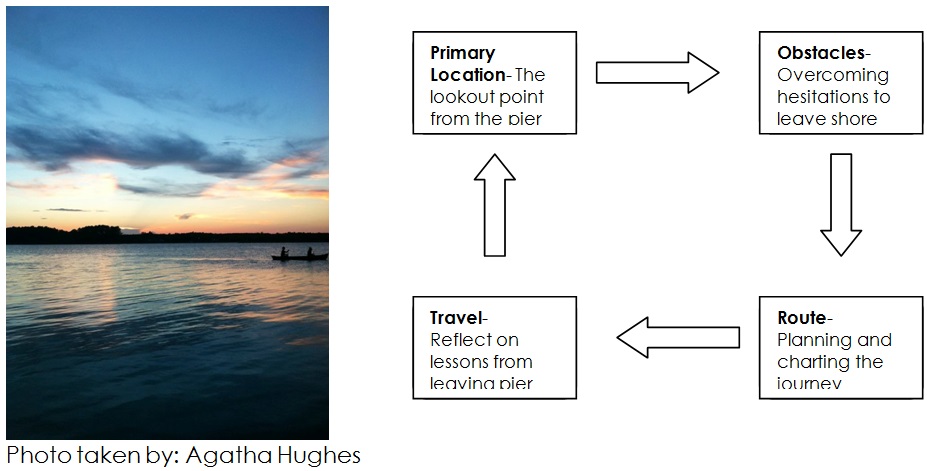A Coaching Model Created by Agatha Hughes
(Life & Wellness Coach, UNITED STATES)
Imagine yourself standing on a pier at sunset. This view always leads to a clear, reflective, and hopeful place and because of that, it’s the perfect setting for a coaching space.
 Along the pier are four pilings from where you stand, leading to the end of the pier. Each will represent a segment of the coaching model as you step further off shore.
Along the pier are four pilings from where you stand, leading to the end of the pier. Each will represent a segment of the coaching model as you step further off shore.
Primary Location:
It only makes sense that we begin here. The client should recognize and define where he stands right now in life or in a situation so that he can continue on to answer questions such as:
What is the current situation? What am I missing because of it? How can it be even better? Why is this not the right location for me anymore? Which directions can I go in? and What might be some ideal destinations (situations) for me?
When we are in a safe and calm environment, we can truly reflect on the answers to questions that we commonly avoid due to fear of uncharted waters and failure. Serenity of the coaching space is paramount, especially for those who dislike vulnerability, tend to deny need for improvement, or fail to acknowledge wishes. Identifying possible destinations helps the client to focus without eliminating possibilities. A pier at sunset is a great place to be, but the real joy comes when you venture off.
Obstacles:
Now that we have elaborated on our current position and how it is no longer or has never been the best fit, we can identify potential obstacles and break down barriers. The coach might offer questions like:
What has prevented you from moving on? How are you already prepared for this journey? What are foreseeable problems you may encounter? and How can you plan to overcome them?
It is important to identify the reasons the client has not created change because this often underlines fears, underlying beliefs, or more tangible obstacles. It may reveal that the destinations the client claims he wants to reach are not really his ideas. It is also vital for the client to state why and how he is ready/qualified to begin this journey because we all have unique strengths that can make us irreplaceable and valuable in new roles. Identifying strengths creates a positive and motivating starting point without focusing on problems that often aren’t even blocking our success. I’m sure when we began as coaches, we compared ourselves to characteristics that a coach should embody, but we likely initially neglected to recognize our own unique traits and experiences that set us each apart. Once we defined our individual backgrounds and purpose, we felt confident and secure in pursuing coaching. Finally, preparedness for potential hurdles decreases feelings of instability and hesitation. You won’t want to set sail without life jackets.
Route:
Now we’re planning. The client should consider:
What information do I need to continue forward? What are my necessary steps? In what order should these steps be completed? How will I refuel along the way?
This step is about navigating the client’s agenda. The boater leaves the dock- he knows he wants to get off shore because x, y, and z, he’s prepared for storms and has his equipment, but now he needs a map, plans for refueling, and planned stops along the way. The client will benefit from rewarding himself as he progresses on the way to his destination. We all need to refuel and congratulate ourselves in order to keep going. I made it through nursing school and didn’t celebrate until graduation, which made it a long, boring, and anti-climactic trip.
Travel Review:
So we’ve reached the client’s agenda! Take in the view, but let’s not forget to take a look back at all the distance we’ve covered.
What progress have you made in your journey? What significant changes have you noticed since you realized/adjusted/changed ___? How have you grown? How is this destination more ‘you’? What is next?
Humans never stop. We haven’t reached that sunset, but we’re always going to head towards it because we continuously evolve and learn and grow. The client should admire himself on his successes and growths and be content with it. When he is ready, we can begin work on the last question.